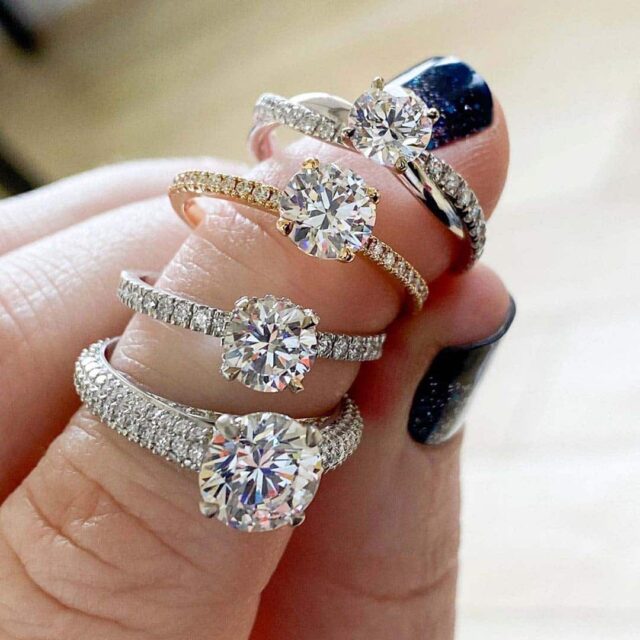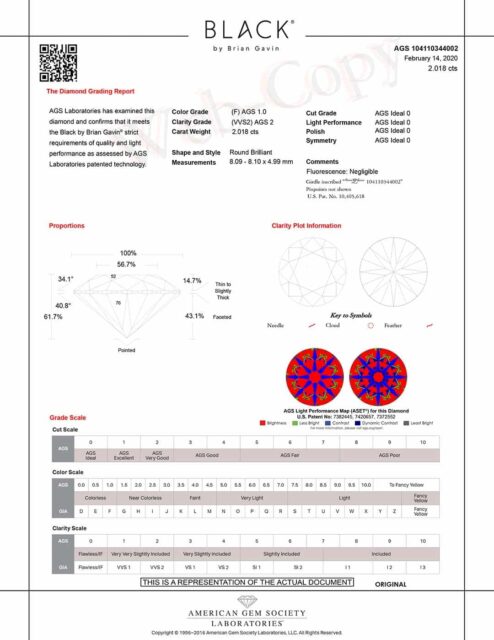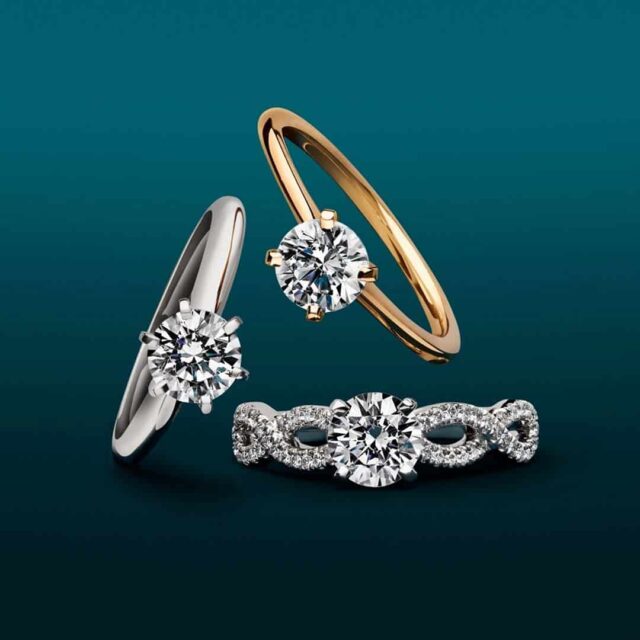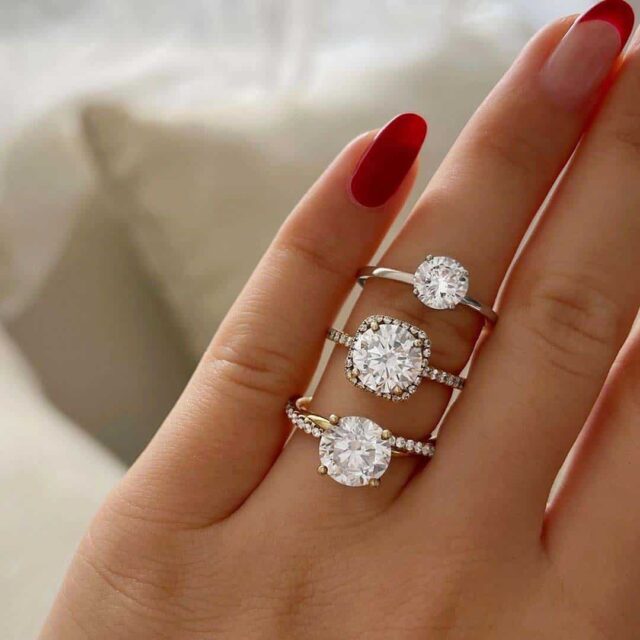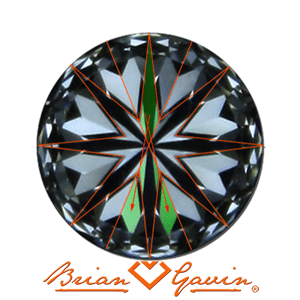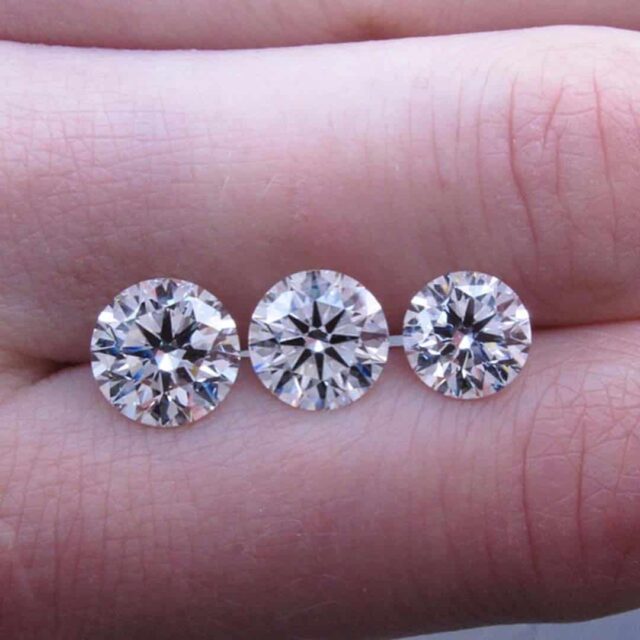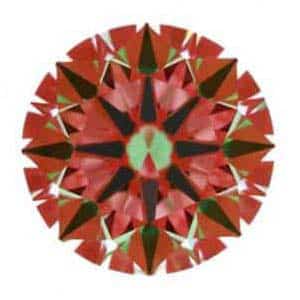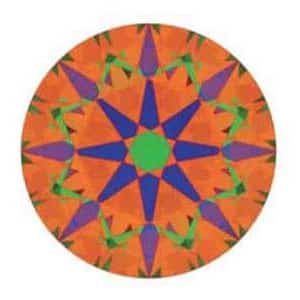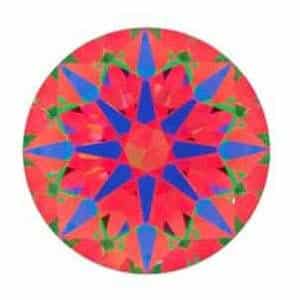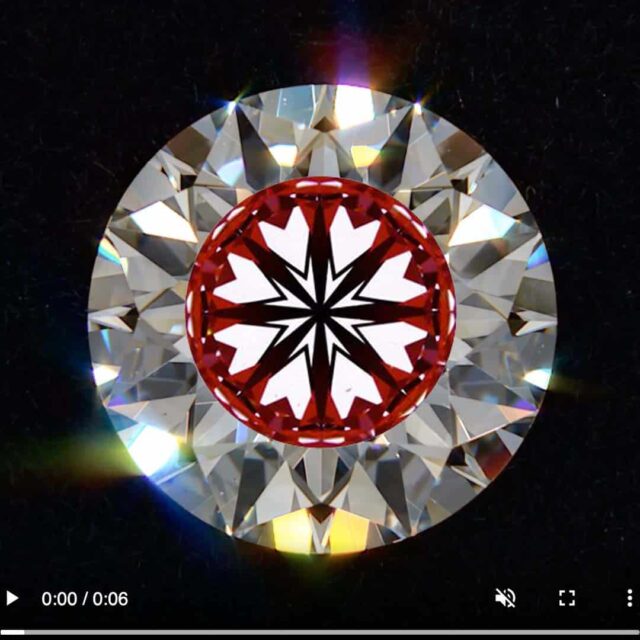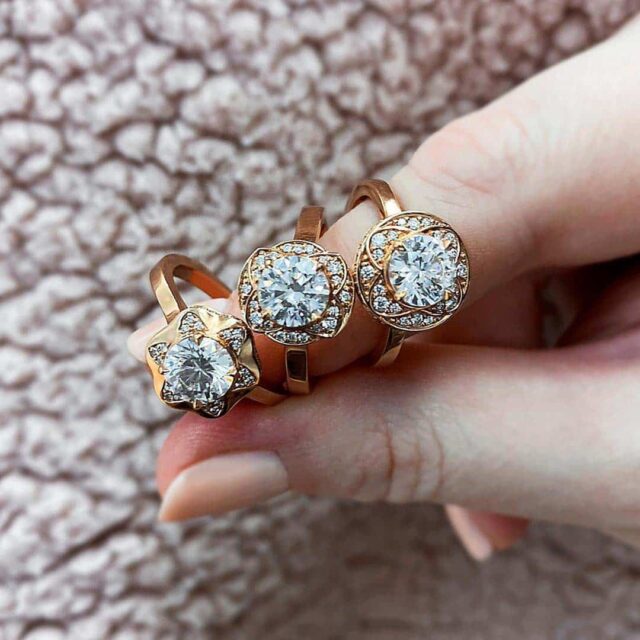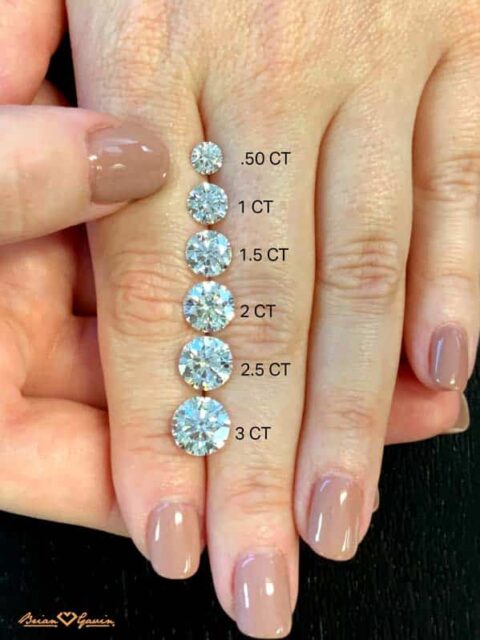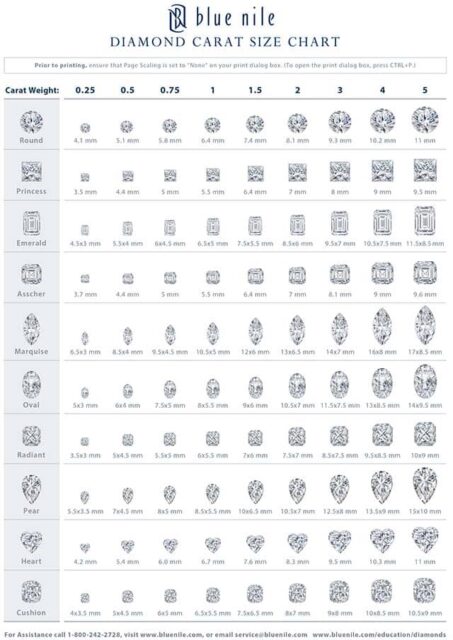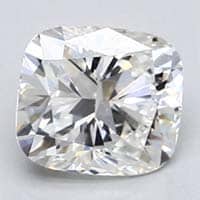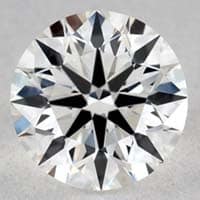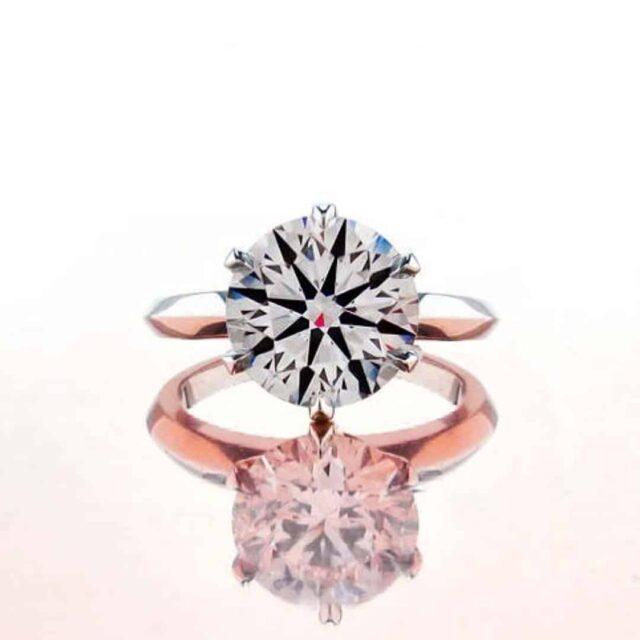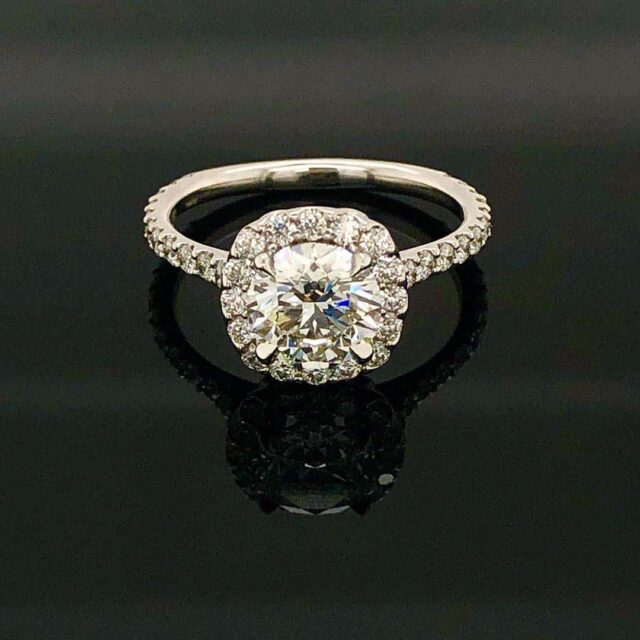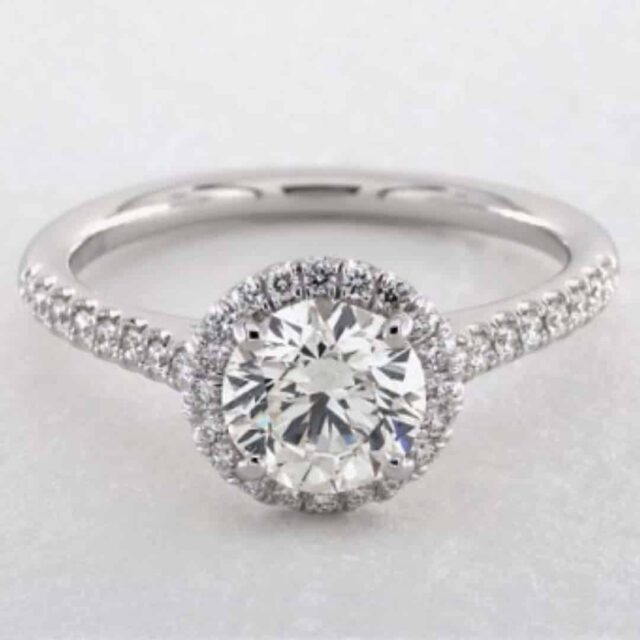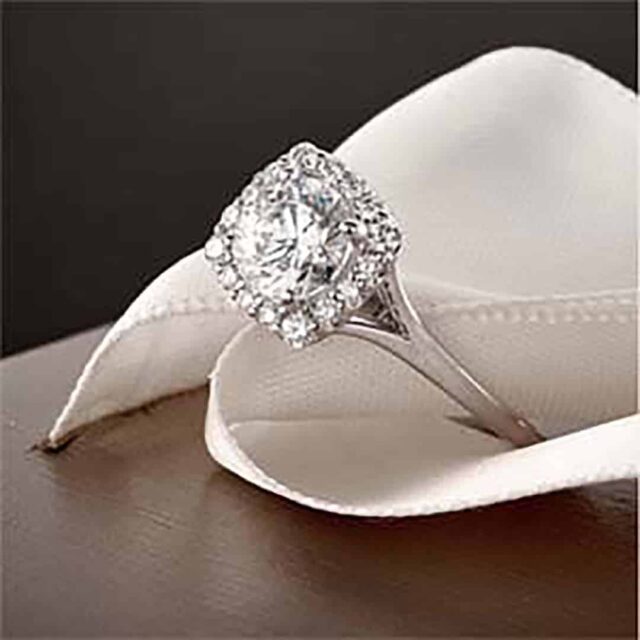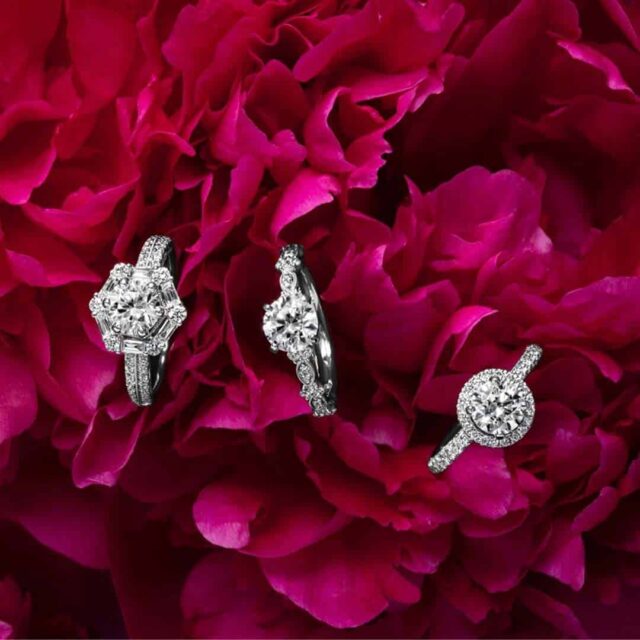The modern round brilliant cut diamond is the most popular shape because the symmetrical shape creates a uniform pattern of light return with vivid sparkle.
Consequently, nothing beats the vivid sparkle factor and superior light performance of a super ideal cut round diamond.
Be sure to download The NiceIce® Blueprint™ and keep it on hand as a desktop reference. After all, it is the most in-depth resource on how to buy round brilliant cut diamonds for light performance.
At the same time, this article about the modern round brilliant cut diamond will provide you with a good overview of what to look for in this shape. However, the short story is that Black by Brian Gavin Diamonds offer the best performance.
Diamond and Jewelry Coupons & Sales:
* See individual sites for terms and conditions.
Round Cut Diamond Buying Tips:
As a matter of fact, there is a common mistake that most people make when buying a round brilliant cut diamond. That is assuming that the overall cut rating is a guarantee of light performance.
For example, many people think that the overall cut grade of GIA Excellent cut guarantees that the light performance will be exceptional. On the contrary, the cut grade of a diamond is really more of a place to start the evaluation process.
In the first place, the range of proportions that defines the AGS Ideal and GIA Excellent rating is quite broad. Remember that that slight differences in pavilion angle can dramatically affect the volume of light return. At the same time, subtle differences in crown angle can affect the balance of brilliance and dispersion.
With this in mind, you might be setting yourself up for disappointment if you rely on the overall cut grade by itself. Although this may be true, the majority of people searching for diamonds online fail to take the proportions into account.
The second biggest mistake people make is not learning how to use the ASET Scope to verify light performance. Brian Gavin is the only diamond cutter to adopt the use of Advanced ASET by the AGS Laboratory as of publication.
The Best Proportions for Round Brilliant Cut Diamonds:
The diamond industry recently celebrated the 100 year anniversary of the Tolkowsky round brilliant cut diamond. With that in mind, you would think that more people in the diamond industry would acknowledge the affect of proportions on light return and sparkle factor.
Unfortunately, the vast majority of diamond cutters appear to be more focused on yield of carat weight rather than producing spectacular sparkle.
Although that may be true, stick to the following proportions for round brilliant cut diamonds and you'll dramatically improve your chances:
How Crown and Pavilion Angle Affect Light Return and Sparkle Factor:
Generally speaking, a pavilion angle between 40.6 - 40.9 degrees should produce a high volume of light return in a round diamond. At the same time, a crown angle between 34.3 - 35 degrees should produce a virtual balance of brilliance and dispersion.
There is a measurable decrease in light return when the pavilion angle is below 40.5 degrees and/or 41-degrees. As a matter of fact, a pavilion angle of 41 degrees usually means a pavilion depth of 43.5%. And that is the critical tipping point where light begins not to strike fully off of the pavilion facets.
A round diamond tends to exhibit more brilliance when the crown angle gets down to around 34 degrees. Whereas it will exhibit more dispersion when the crown angle is beyond 35.5 degrees.
However, those two factors will be at the expense of the other in those situations and there is more risk of light leakage. That is why we recommend the middle of the spectrum that is between 34.3 - 35 degrees.
Facet Diagram for the Modern Round Brilliant Cut Diamond:
The plotting diagrams below show the facet structure of a modern round brilliant cut diamond. The first image on the left shows the crown facets or upper section of a round diamond.
The diagram in the center shows the facet structure of the pavilion or lower half of the diamond. The image on the right shows how the crown and pavilion sections look from a side profile.
The modern round brilliant cut diamond consists of 58 facets including the culet that is the bottom point of the diamond. Depending on whether or not a person counts the culet as a facet (which it is) they will describe a round brilliant cut diamond as having 57 or 58 facets.
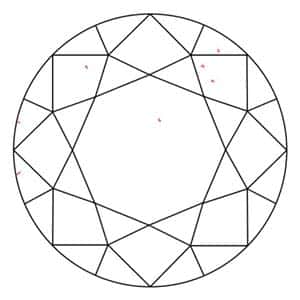
Table View Round Brilliant Cut Diamond
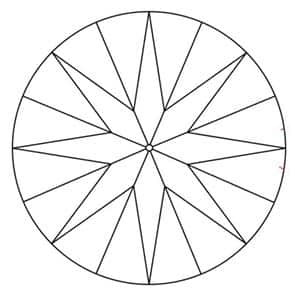
Pavilion View Round Brilliant Diamond
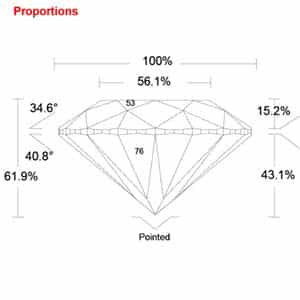
Side Profile Round Diamond
Crown Facet Structure of Round Brilliant Cut Diamonds:
The crown facets of a round brilliant cut diamond consist of the table facet, star, bezel, and upper girdle facets. With exception of the table facet, the other sections can be divided equally by eight. To be more specific, there is one table facet, eight star facets, eight bezel facets, and sixteen upper girdle facets.
(1) Table Facet: The large flat facet that appears on top of the crown section is the table facet. We recommend keeping the table facet of a round diamond between 53 - 58% for optimum performance.
(8) Star Facets: The triangle shaped facets that border the table facet are the star facets that create the shoulders of the hearts that are visible in hearts and arrows diamonds. Interestingly enough, if the crown angle of a round diamond is too steep or too shallow then the star facets can reflect back up from under the table facet and create obstruction.
(8) Bezel Facets: The kite-shaped facets that connect the table facet to the girdle edge of the diamond are known as bezel facets. Some people also refer to the bezel facets as kite facets since the outline is kite-shape.
(16) Upper Girdle Facets: The elongated triangle-shape facets that border the edge of the crown section are called upper girdle facets. In order for light to reflect evenly throughout these facets, it is important that the crown angle and crown height measurements are cohesive.
Pavilion Facet Structure of a Round Brilliant Cut Diamond:
The pavilion facets of a round brilliant cut diamond consist of the eight pavilion main facets that create the arrows pattern. Along with sixteen lower girdle facets that are located between the pavilion main facets.
(8) Pavilion Main Facets: The arrows pattern or eight pointed star that you see when looking at a round diamond in the face-up position is created by light reflecting off of the eight pavilion main facets.
(16) Lower Girdle Facets: There are eight pairs of lower girdle facets within the pavilion section of a round diamond. Interestingly enough, the lower girdle facets play an integral part in creating hearts patterns in round brilliant cut diamonds.
Basically, the light reflecting off the lower girdle facets splits apart across the pavilion main facets into two sections that eventually form a heart as shown in the photograph to the left.
Optical Precision = Light Performance and Sparkle Factor:
One of the least understood concepts when buying a diamond is light performance and sparkle factor. Although this may be true, it's probably because most people working in the diamond industry don't understand it either. Not only that, but the majority of diamond cutters seem focused on cutting for retention of carat weight instead of performance.
With that in mind, you have to be vigilant in your pursuit of the ultimate round brilliant cut diamond. At the same time, you can significantly improve your chances of success by limiting the search to Brian Gavin.
That is because they polish their diamonds to exhibit a higher degree of optical precision. The term optical precision refers to the consistency of facet size, shape, and alignment from the perspective of 360 degrees.
Most people make the mistake of assuming that optical precision is the same as diamond symmetry. However, nothing could be farther from the truth and the gemological labs do not take optical precision into account as part of the grading process.
ASET Scope Comparison of 3 Ideal Cut Round Brilliant Cut Diamonds:
The ASET Scope images shown above are for three round brilliant ideal cut diamonds with proportions in the middle of the spectrum. In other words, all three of the diamonds pictured above have proportions within the target range for the super ideal cut rating.
Be that as it may, the ASET Scope images for the diamonds on the left and the right reveal light leakage and/or secondary brightness due to a lesser degree of optical precision. And yet, all three of these diamonds have an overall cut grade of AGS Ideal or GIA Excellent.
If that's the case, why does the ASET Scope image for the round diamond (above left) indicate a moderate amount of light leakage? Compare it with the ASET Scope image for the Hearts and Arrows diamond (above right) and you'll see that it's exhibiting less light leakage because there is a higher concentration of red.
At the same time, he discoloration visible under the table facet indicates a slight amount of leakage. In addition, it shows that the minor facets could be fine-tuned to produce better light performance.
As a matter of fact, the Black by Brian Gavin Hearts and Arrows diamond in the middle exhibits the best light performance. Notice the consistency of hue and saturation visible under the table facet and throughout the diamond. This means that this diamond will be brighter and the sparkle factor will be more vivid and intense.
Where to Buy Round Brilliant Cut Diamonds:
In our experience, the best places to buy round brilliant cut diamonds are the vendors we have chosen to work with. That is because these vendors strive to provide our clients with the best overall experience and product.
Hearts & Arrows Super Ideal Cut:
GIA Excellent Cut Round Brilliant Cut Diamonds:
Ideal vs Super Ideal Performance:
Savvy diamond buyers know that there can be dramatic differences in the light performance of ideal and super ideal cut diamonds. As a matter of fact, the majority of standard ideal cut diamonds do not exhibit very good optical precision. That means that there is a lot of variance in the size, shape, and alignment of the facets.
With that in mind, we strongly suggest the hearts and arrows diamonds from Brian Gavin. As a matter of fact, Brian is one of the cutters who used to produce H&A diamonds for our private label collection.
We're still receiving emails from clients who rave about the sparkle factor of those diamonds. In addition, Brian Gavin has an amazing custom jewelry fabrication division.
Take a look at these custom 18k rose gold engagement rings that we found on Instagram. They're absolutely stunning, right?
As a matter of fact, they were designed using the 810 Ring Builder from Brian Gavin. You have to check it out because it's so much fun to explore all the possibilities!
Round Diamond Carat Weight:
People often wonder how diamonds of different carat weights will look on their hand. As a matter of fact, this can be a bit of a challenge to figure out online since photographs are rarely shown to scale. With that in mind, here is a photograph of the most popular sizes of round diamonds on a hand.
People tend to think of diamond carat weight in terms of whole sizes whereas the industry refers to them in points. In other words, a one carat diamond is equivalent to 100 points and that is equal to the weight of 100 carob seeds.
With this in mind, a diamond dealer takes the total carat weight in points, e.g. 0.98 carats = 98 points into account even though the diamond might be represented as being a one carat diamond. That is because the Federal Trade Commission (FTC) allows the industry to round carat weight off to the nearest two points of the mark.
Although this may be true, the reality is that there is a huge difference in the Price Per Carat (PPC) between a round diamond that weighs 0.98 and 1.00 carats. You can learn more about that in this tutorial on diamond prices.
Carat Weight Chart for Round Diamonds:
This diamond carat weight chart from Blue Nile provides a visual reference of the most popular diamond shapes and sizes. That means that you will be able to see the difference between a 1.00 carat round and princess cut diamond for example.
Of course, we should take a moment to talk about the difference in how different shape diamonds face-up in relationship to carat weight. You might have heard that fancy shape diamonds cost less per carat than rounds. That's true to some extent, but there is more to the story than meets the eye.
That's because most fancy shape diamonds are cut considerably deeper than round brilliant cut diamonds. That means that you'll have to buy a much larger fancy shape diamond to get the same visible outside diameter as a round.
With this in mind, you might want to think of the diamond carat weight of round and fancy shapes in terms of how they face-up on your finger. In other words, you should consider the ratio of visible outside diameter rather than carat weight when comparing the price of round and fancy shape diamonds.
Round vs. Fancy Shape Diamond Prices:
As can be seen by the examples below, there is a difference in the Price Per Carat (PPC) of round and fancy shape diamonds. At the same time, it is often necessary to purchase a larger fancy shape in order to achieve the same relative size as a round diamond on the finger.
At the same time, there tends to be a distinct difference in the degree of light return and sparkle factor. It doesn't take a rocket scientist to see that the sparkle factor of the James Allen True Hearts round diamond is going to be more vivid and intense than the cushion and oval brilliant cut diamonds below.
One of the reasons for the difference in light performance is that the facet structure of round diamonds is more symmetrical. At the same time, the majority of fancy shape diamonds exhibit higher degrees of light leakage.
That is because they are generally not cut to exhibit the higher degree of optical precision as hearts and arrows diamonds.
Which Diamond Shape Looks Brighter?
1.20 carats, G-color, VS-2 clarity, GIA Excellent P&S.
$
5,083.00
/per carat
6.32 mm average outside diameter.
1.20 carats, G-color, VS-2 clarity, AGS Ideal Cut.
$
7,566.66
/per carat
6.79 mm average outside diameter.
1.20 carats, G-color, VS-2 clarity, GIA EX/VG P&S.
$
5,255.00
/per carat
7.215 mm average outside diameter.
One of the reasons for the difference in light performance is that the facet structure of round diamonds is more symmetrical. At the same time, the majority of fancy shape diamonds exhibit higher degrees of light leakage. That is because they are generally not cut to exhibit the higher degree of optical precision as hearts and arrows diamonds.
The Best Settings for Round Diamonds:
The majority of engagement rings are designed for round diamonds because it is the most popular shape of all time. With that in mind, there are is a broad selection of ring styles to choose from.
However, it's also true that certain styles of engagement rings are more popular than others. Here is a list of the engagement rings that tend to be most popular with our clients.
The classic six prong solitaire by Brian Gavin below is probably the most popular setting of all time. As a matter of fact, we consider this engagement ring to be a timeless classic.
To begin with, when you see a traditional solitaire on a ladies ring finger, you automatically know that it's an engagement ring. After all, this is the ring style that has been featured in just about every romantic movie that you've ever seen.
Secondly, just about everybody loves the way that the prongs are designed to look like a royal crown setting. As a matter of fact, this six prong setting has one of the most visually pleasing prong configurations that we've ever seen.
It's no wonder that this ring is so popular with our clients. Be sure to ask me for an exclusive Brian Gavin coupon that will save you some money on the setting. You can submit a request via our Diamond Concierge Service.
Halo Settings for Round Cut Diamonds:
The Anita Halo setting by Brian Gavin is extremely popular with our clients. As a matter of fact, this engagement ring was designed for our client Anita, hence the name.
She had been considering several different styles of halo setting, including the French Halo setting by Ritani. According to Anita, the French Halo setting felt too light on her finger and she wanted something that felt more substantial.
She also wanted the ring to feature a heart that is visible from the side of the ring under the center stone. Brian Gavin custom designed the Anita Halo setting to match her desires.
Needless to say that Anita is thrilled with her ring and it continues to be extremely popular with our clients. Be sure to check it out if you're looking for an affordable halo setting.
Pavé Halo and Shank for Round Brilliant Cut Diamonds:
The pavé halo and shank engagement ring for a round diamond by James Allen is also extremely popular with our clients. As a matter of fact, it was one of the most popular ring styles from James Allen in 2019 according to reviews by their customers.
One of the reasons why halo settings are so popular is because they increase the circumference of sparkle factor on the finger. The addition of smaller diamonds set around the edge of the diamond will make it seem larger from a distance.
The benefit of course, is that people will see more sparkle from across the room. At the same time, you don't have to pay the premium for a larger diamond in order to create that illusion.
French-set Halo for Round Shape Diamonds:
The French-set cushion shaped halo setting by Ritani for a round diamond gives the traditional halo an interesting twist. Basically, the ring features a halo setting with a cushion pillow-like outline rather than the traditional round shape.
Ritani also added a split-shank to the ring instead of the more common straight shank at the top. The French halo setting by Ritani is also a very popular choice. That ring also features a cushion shape halo.
However, there are also pavé set diamonds in the ring shank so that the sparkle runs partway around the finger. As a matter of fact, the French-set halo setting by Ritani is also available with a round halo instead of the cushion-shape outline.
Monique Lhuillier Engagement Rings for Rounds:
If you're looking for something different, then be sure to check out the Monique Lhuillier Collection from Blue Nile. This collection of engagement rings for round diamonds contains a lot of very pretty designs. That means that you're likely to find something different than the usual choices.
Here are the links to the rings pictured on the left in order from left to right: the hexagon halo setting; the draped eternal engagement ring; and the everlasting halo setting.
Of course, Blue Nile also has an extensive catalog of engagement ring styles for round diamonds for you to choose from. These just happen to be some of the more popular styles from designer Monique Lhuillier. Ultimately, it's simply a matter of choosing a ring style that appeals to you.
Regardless of where you decide to purchase your engagement ring, we hope that you'll take advantage of our Free Diamond Concierge Service. We'll be happy to help you search for a round or fancy shape diamond. At the same time, we're happy to help you evaluate diamonds from online or your local jewelry store.

